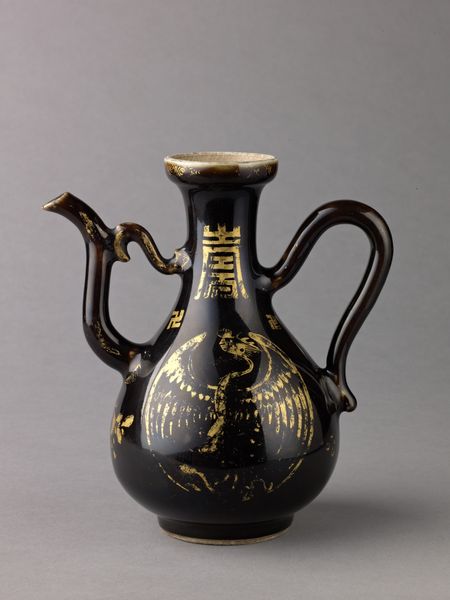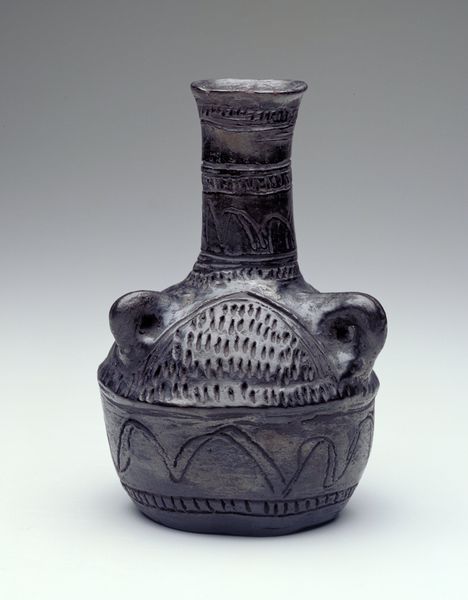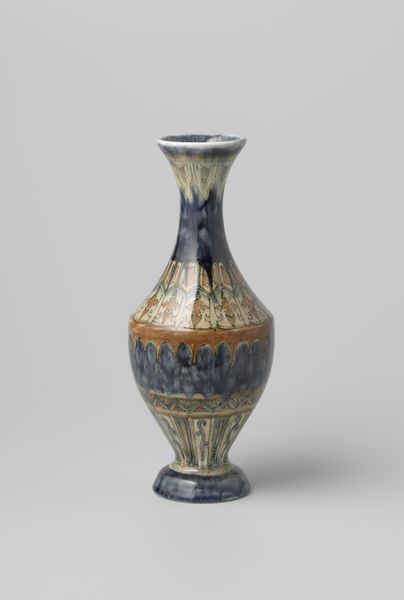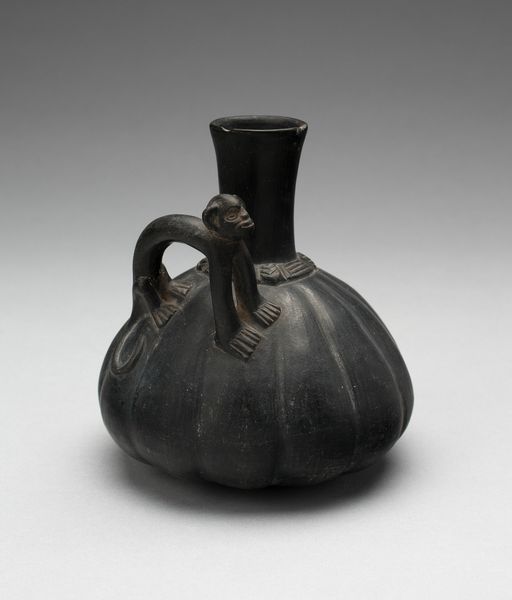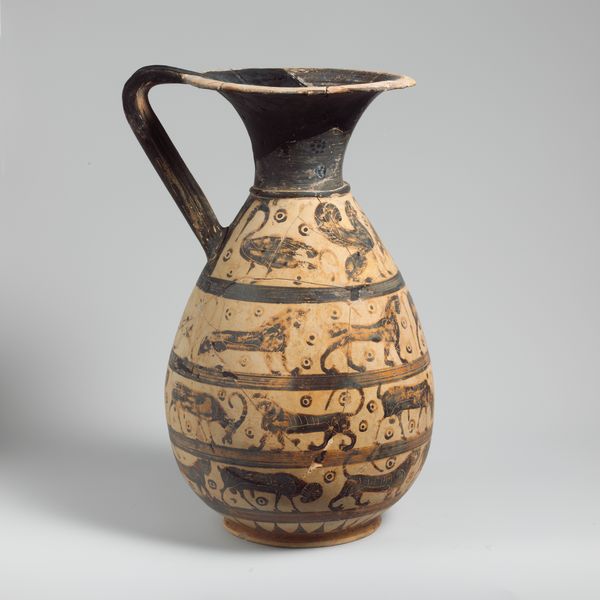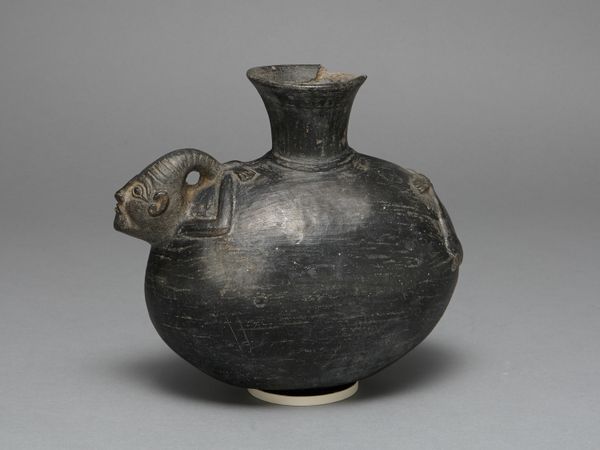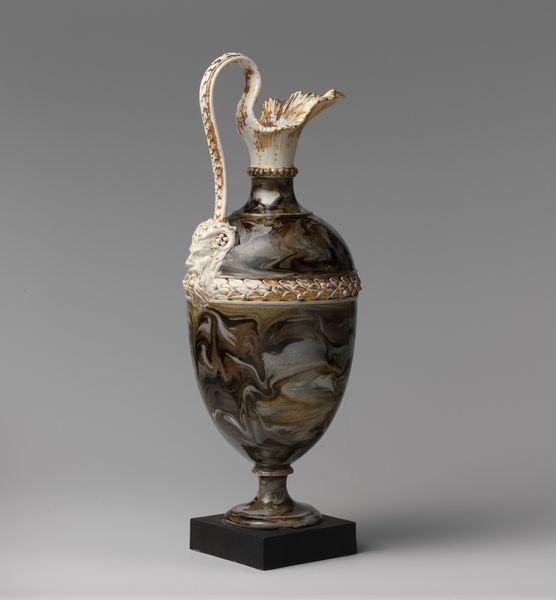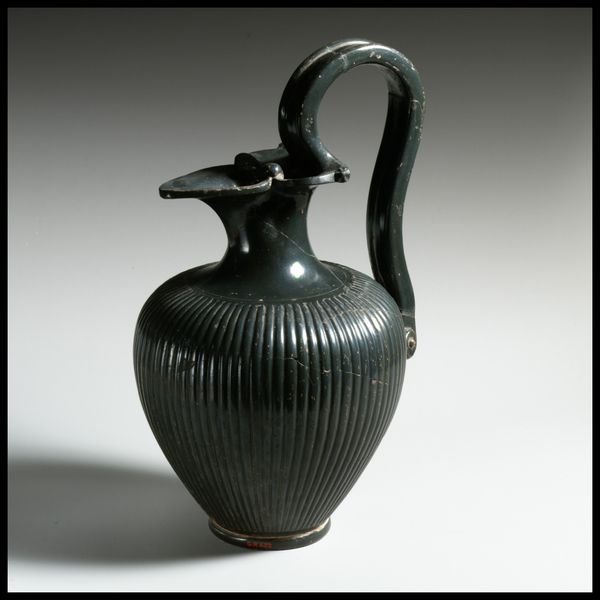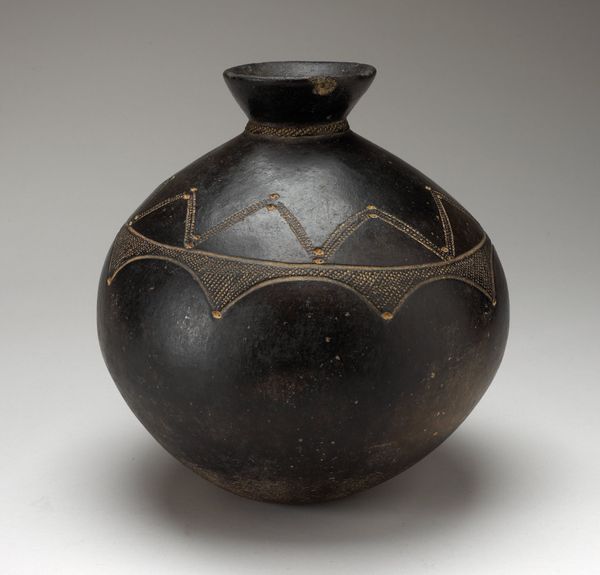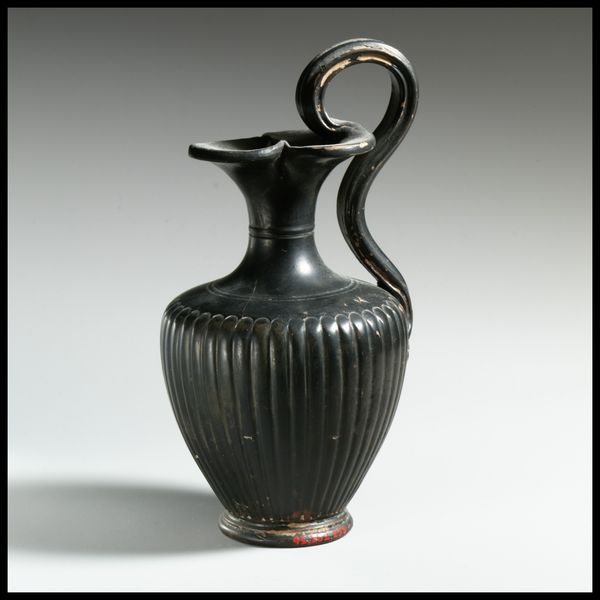
ceramic, earthenware, sculpture
#
greek-and-roman-art
#
ceramic
#
vase
#
form
#
roman-art
#
earthenware
#
ancient-mediterranean
#
sculpture
#
line
Dimensions: H. 8 1/16 in. (20.5 cm)
Copyright: Public Domain
Curator: Let's discuss this terracotta oinochoe, a jug crafted around 300 BC, currently held in the Metropolitan Museum of Art. Editor: Immediately striking. The elegant, dark form with subtle striations feels remarkably modern despite its age. It is simultaneously weighty and sleek. Curator: It's a testament to the enduring sophistication of ancient craft. These vessels were essential in daily life for pouring wine or oil. Think about the hands that held it, the gatherings it served. We can see these gatherings reflected through a social lens - this vessel providing a conduit to the discussions, disagreements and resolutions which have come to define civilization. Editor: Function is undeniable, but consider the exquisite balance in the curve of the handle, mirroring the body's roundness. The interplay of light and shadow along the vertical lines—purely formal elements elevate it beyond utility. Curator: Beyond the aesthetics, we should also question how these types of vessels become commodities; this object representing both a part of Greek daily life as well as the rise of economic trade within the culture. It connects us to discussions around value and the societal systems which support it. Editor: Agreed. But the fluting also directs the eye upward, accentuating the vase's form. Look at how the artist employs a simple color palette - almost monochrome - to emphasize shape and texture, not narrative. Curator: This minimalism also perhaps speaks to the suppression of female identity as the matriarchal forms of ancient artistic expression fade to later allow for this sleek but non-descript artistic direction. It seems devoid of identity outside of pure societal need and function. Editor: I perceive an object refined through process, reduced to only its essential shape. The form transcends historical narrative. Curator: Perhaps, but that transcendence is intertwined with cultural shifts of the period. Food for thought. Editor: A vessel filled with history. Curator: And context.
Comments
No comments
Be the first to comment and join the conversation on the ultimate creative platform.
